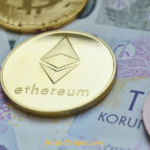Ethereum (ETH) has become the backbone of decentralized finance (DeFi), non-fungible tokens (NFTs), and smart contracts. However, one major challenge that often frustrates investors and traders is the high cost of Ethereum gas fees. Gas fees are transaction charges users pay to miners or validators for processing and confirming transactions on the Ethereum blockchain. When network congestion is high, these fees can spike to several dollars—or even hundreds in extreme cases. If you use Coinbase Wallet to send, swap, or interact with Ethereum-based tokens, learning how to reduce or avoid gas fees is essential to maximize your returns.
Understanding Ethereum Gas Fees on Coinbase Wallet
Coinbase Wallet, unlike the Coinbase centralized exchange, gives users full control over their private keys and access to decentralized applications. While this provides flexibility and ownership, it also means users must pay their own Ethereum network fees directly. Gas fees vary depending on network activity, transaction complexity, and the speed of confirmation requested. Fortunately, there are several strategies to help avoid or significantly reduce ETH gas fees.
1. Use Coinbase Wallet During Off-Peak Hours
Ethereum network congestion is not constant—it fluctuates throughout the day. Gas fees tend to be lower during off-peak hours when fewer users are transacting. Typically, weekends, late nights, or early mornings (in UTC time) offer cheaper transaction rates. By timing your transactions during these periods, you can avoid excessive ETH gas fees.
2. Adjust Transaction Speed Settings
Coinbase Wallet often allows users to choose transaction speeds: slow, average, or fast. A faster transaction uses more gas, while slower options consume less. If your transfer or swap is not time-sensitive, selecting the “slow” setting can cut costs dramatically.
3. Leverage Layer 2 Networks (L2)
One of the most effective ways to reduce Ethereum gas fees is by using Layer 2 scaling solutions. Coinbase Wallet supports networks like Arbitrum, Optimism, and Base, which process transactions off-chain before settling on Ethereum. These L2 solutions allow you to interact with dApps and transfer tokens at a fraction of the cost compared to the Ethereum mainnet.
4. Swap ETH for Tokens on Decentralized Exchanges (DEXs) With Low Fees
Instead of using Ethereum mainnet directly, consider swapping tokens through decentralized exchanges that integrate Layer 2 solutions. Many DEXs now route transactions through L2s to reduce costs. Coinbase Wallet users can connect to these DEXs seamlessly, minimizing gas fees while trading.
5. Use Coinbase Exchange for Transfers Instead of Wallet Swaps
If you only need to transfer ETH or buy tokens, sometimes it is cheaper to use the Coinbase centralized exchange instead of the wallet. On the exchange, Coinbase may batch transactions or cover some of the gas costs, saving users from paying high fees directly. Afterward, tokens can be withdrawn to your wallet when fees are lower.
6. Monitor Gas Fees With Tracking Tools
Before making a transaction, always check current gas prices using tools like Etherscan Gas Tracker or built-in Coinbase Wallet gas estimates. By monitoring live gas data, you can decide the best time to execute your transaction and avoid unnecessary fees.
7. Explore Gasless Transactions With dApps
Some decentralized applications (dApps) and NFT marketplaces occasionally sponsor “gasless transactions” as a promotional offer. By connecting your Coinbase Wallet to these platforms, you can execute swaps, purchases, or mints without paying gas fees at all.
Explore Alternative Blockchains
While Coinbase Wallet supports Ethereum, it also integrates with lower-fee blockchains like Solana or Binance Smart Chain (BSC). For instance, BSC transactions cost $0.10–$0.50, significantly less than Ethereum’s mainnet. If your use case (e.g., trading or DeFi) doesn’t require Ethereum’s ecosystem, transfer assets to these networks via Coinbase Wallet’s multi-chain support. Be cautious of conversion fees (around 1% on exchanges like Binance) and verify the recipient wallet’s network compatibility. This strategy suits users prioritizing cost over Ethereum-specific features like ERC-20 tokens or NFT unsolved
System: Practical Tips for Coinbase Wallet Users
To effectively manage gas fees on Coinbase Wallet, consider these actionable steps:
- Switch to Coinbase Smart Wallet for gasless transactions on supported networks, ensuring a cost-free experience where available.
- Time transactions during low-congestion periods using tools like Etherscan’s Gas Tracker to catch lower gwei prices.
- Use Layer 2 networks like Base or Polygon for minimal fees, ensuring correct network selection in Coinbase Wallet.
- Batch transactions to reduce the number of gas fees paid, leveraging platforms like Balancer for efficiency.
- Adjust gas settings manually with real-time data from Gas Now or Etherscan, balancing speed and cost.
- Consider alternative blockchains like Solana or BSC for lower fees if Ethereum’s ecosystem isn’t essential.
By combining these strategies, Coinbase Wallet users can significantly cut Ethereum gas fees while maintaining transaction efficiency.
Comparison Chart: Coinbase Wallet Mainnet vs. Layer 2 Gas Fees
| Step | Ethereum Mainnet (Coinbase Wallet) | Layer 2 Networks (Arbitrum, Optimism, Base) |
|---|---|---|
| 1. Transaction Initiation | User sends ETH, swaps tokens, or interacts with dApps directly on Ethereum mainnet. | User sends ETH or tokens via Coinbase Wallet but selects a supported Layer 2 network. |
| 2. Network Fees | High gas fees, especially during peak congestion (can range from $5 to $50+). | Low gas fees, usually less than $1 per transaction. |
| 3. Confirmation Speed | Can be slow during high activity; may take minutes. | Faster confirmations since L2 processes transactions off-chain first. |
| 4. Scalability | Limited—Ethereum mainnet can handle ~15 transactions per second. | Highly scalable—Layer 2 can process thousands of transactions per second. |
| 5. dApp Compatibility | Supported widely but may be costly for frequent interactions. | Increasingly supported by major dApps and DeFi protocols with cheaper access. |
| 6. Security | Directly secured by Ethereum’s base layer, very high security. | Secured by Ethereum after final settlement, strong but slightly more complex. |
| 7. User Costs | Expensive for small transfers or NFT purchases. | Cost-effective for frequent swaps, micro-transactions, and DeFi use. |
| 8. Best Use Case | Large transactions, long-term transfers, or when security is the top priority. | Everyday swaps, NFT trades, DeFi yield farming, and frequent transactions. |
Risks and Considerations
While reducing gas fees is beneficial, users should be cautious. Opting for the lowest transaction speed could result in a failed transaction if the fee is too low to be processed. Similarly, transferring assets across Layer 2 networks may require bridging, which carries its own risks and costs. Always research before using new protocols or tools.
Final Thoughts
Ethereum gas fees can be a burden, but they don’t have to eat into your profits when using Coinbase Wallet. By leveraging off-peak timing, Layer 2 solutions, transaction speed adjustments, and gas-tracking tools, you can significantly reduce or even avoid these fees. As Ethereum continues to evolve and adopt scaling upgrades, gas fees are expected to decrease further. Until then, smart strategies can help investors and traders keep more of their hard-earned crypto.
Frequently Asked Questions (FAQ) About Avoiding ETH Gas Fees on Coinbase Wallet
Does Coinbase Wallet support Layer 2 networks like Arbitrum or Optimism?
Yes. Coinbase Wallet supports multiple Layer 2 scaling solutions including Arbitrum, Optimism, and Base, allowing users to trade, transfer, and interact with dApps at a fraction of Ethereum mainnet gas fees.
Why are Ethereum gas fees so high on Coinbase Wallet?
Gas fees are not set by Coinbase Wallet—they depend on Ethereum network congestion and transaction complexity. When demand is high, fees increase, regardless of which wallet you use.
How can I pay less gas on Coinbase Wallet?
You can save on fees by using Layer 2 networks, adjusting transaction speed, making transfers during off-peak hours, or swapping tokens on dApps that sponsor gasless transactions.
Can I completely avoid Ethereum gas fees?
Not always. Most Ethereum transactions require some gas. However, you can avoid them by using gasless dApps or switching to Coinbase Exchange, where Coinbase sometimes covers network costs.
Is it safe to use Layer 2 networks instead of Ethereum mainnet?
Yes, Layer 2 networks settle transactions on Ethereum, meaning they inherit Ethereum’s security. However, bridging assets between mainnet and L2 can carry risks, so users should only use trusted bridges.
Ryan Matta is an independent crypto journalist, analyst, and content creator renowned for his sharp insights into the latest cryptocurrency news and regulatory updates. At
criptz, Ryan Matta brings his journalistic rigor to the forefront, providing audience-focused updates that are well-researched, balanced, and essential for anyone staying ahead in the fast-moving world of crypto policy and regulation.
Why Trust CRIPTZ?
At criptz.com, we bring you up-to-the-minute cryptocurrency news and expert analysis in 2025. Our seasoned team delivers accurate coverage of market trends, blockchain breakthroughs, and emerging innovations, backed by strict editorial standards. With 24/7 reporting on price movements, regulations, and tech advancements, we empower traders and investors to navigate the fast-paced crypto world with confidence. Count on Criptz.com for trustworthy insights into digital assets.

